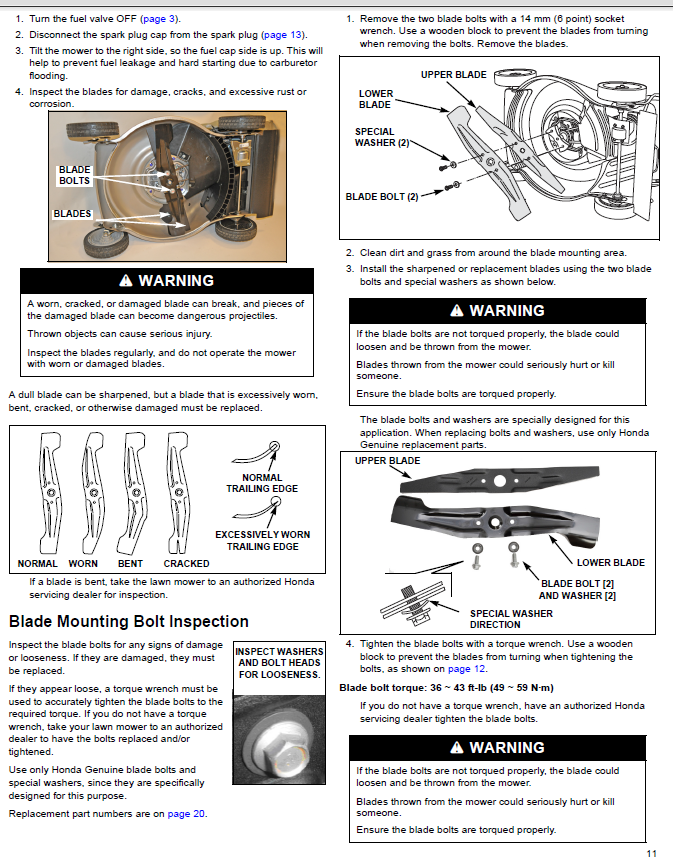MowerMark
Well-Known Member
- Joined
- Mar 1, 2014
- Threads
- 57
- Messages
- 286
Have three questions about blade sharpening. I use a hand-held blade sharpener. Takes only 3-5 strokes and the blade renews.
1. Seems that it is recommended that one doesn't get them too sharp. How does one measure sharpness and how to judge how sharp they should be?
2. The top blade, the one closer to the belt, never seems to get as sharp as the lower blade, the one closest to the grass. Why are there two blades and is it okay for the top one to not be as sharp as the lower one?
3. I sharpen the blades myself because the local shop charges a whopping $16 to sharpen the blades. However, they also check the balance. My mower doesn't vibrate. Is it really important to check the balance after sharpening the blades?
1. Seems that it is recommended that one doesn't get them too sharp. How does one measure sharpness and how to judge how sharp they should be?
2. The top blade, the one closer to the belt, never seems to get as sharp as the lower blade, the one closest to the grass. Why are there two blades and is it okay for the top one to not be as sharp as the lower one?
3. I sharpen the blades myself because the local shop charges a whopping $16 to sharpen the blades. However, they also check the balance. My mower doesn't vibrate. Is it really important to check the balance after sharpening the blades?


